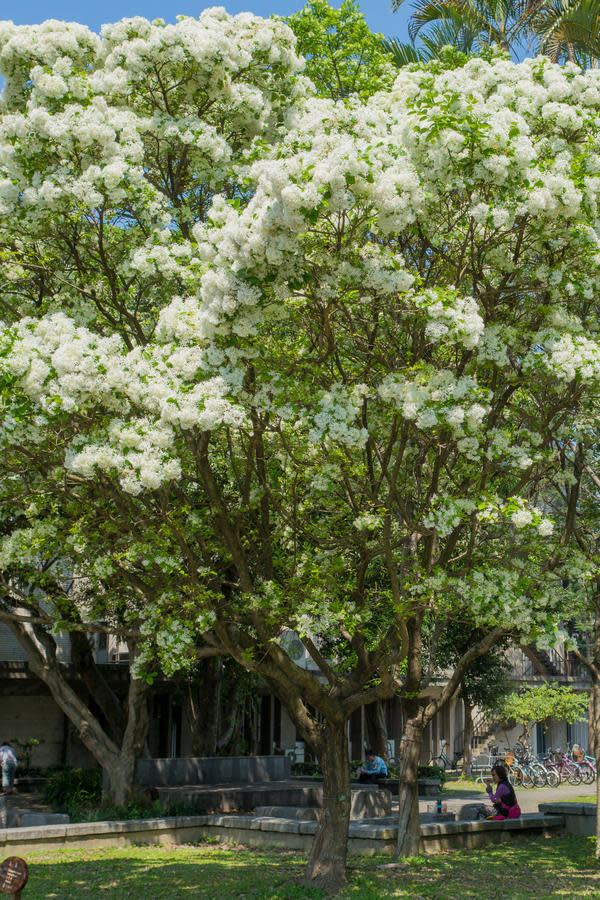After You Cut Down Your Bradford Pear, Plant This
The snarl of a chainsaw never sounds sweeter than when slicing through the trunk of a nasty Bradford pear. As you know, Grumpy has railed against the white-flowering tree (still blooming or yet to bloom, depending on where you live) for years. It explodes in windstorms, its flowers smell like fish, it grows too big, and thousands of its thorny seedlings now consume roadsides and the woods.
If you have a Bradford pear in your yard, yesterday would have been a great day to cut it down. As you didn’t, you can cut it down right now. Go ahead. I’ll enjoy one of Costco’s Kirkland IPAs (the best tasting store brand of anything I’ve tried, I swear) while I wait.
Done? Good job! Now you have a void in your landscape begging to be filled with a better tree. Try one of these. You won’t be sorry.
Serviceberry (Amelanchier sp.)
I guess nobody’s interested in a native tree that combines white spring flowers, blazing orange and red fall leaves, and small reddish-purple fruits that taste like blueberries. Nobody plants it – except for the enlightened Grump, that is. Mine just finished blooming. The bloom time is shorter than that of most flowering trees – 3-4 days or so – but if you add in the fall color, the delicious berries (just try to beat the birds to them), moderate size (to 25 feet tall), and lack of pests, that’s a winner in my book. Give it fertile, well-drained soil and full to partial sun. Hybrids with particularly splendid fall color include ‘Autumn Brilliance’ and ‘Princess Diana.’ Adapted to USDA Zones 4-9.
Carolina silverbell (Halesia carolina)
For the life of me, I cannot understand why more people don’t grow this Southeastern native tree. It’s easy to grow, attains a moderate size of 30-40 feet tall, and has no serious pests. Snow white, bell-shaped flowers hang beneath the length of its graceful branches in spring. Leaves turn yellow in fall. Give it acid, well-drained soil and full to part sun. A related silverbell, Halesia diptera magniflora, has even showier blooms. Adapted to USDA Zones 4-8.
Fringe tree (Chionanthus virginicus)
Also known as grancy graybeard or old man’s beard, this Southeastern native gets its name from the clusters of fleecy white, softly fragrant flowers suspended beneath the branches in spring. It’s usually rounded and multitrunked, growing 12 to 20 feet tall and wide. Female trees bear attractive blue-black fruit favored by birds. Broad green leaves turn bright yellow in fall. Give it fertile, well-drained soil and full to partial sun. Note that it’s one of the last trees to leaf out in spring, so don’t give up on it. Until recently, no pests really bothered it, but as it’s related to ash, don’t plant it in areas infested by the emerald ash borer. Adapted to USDA Zones 3-9.



